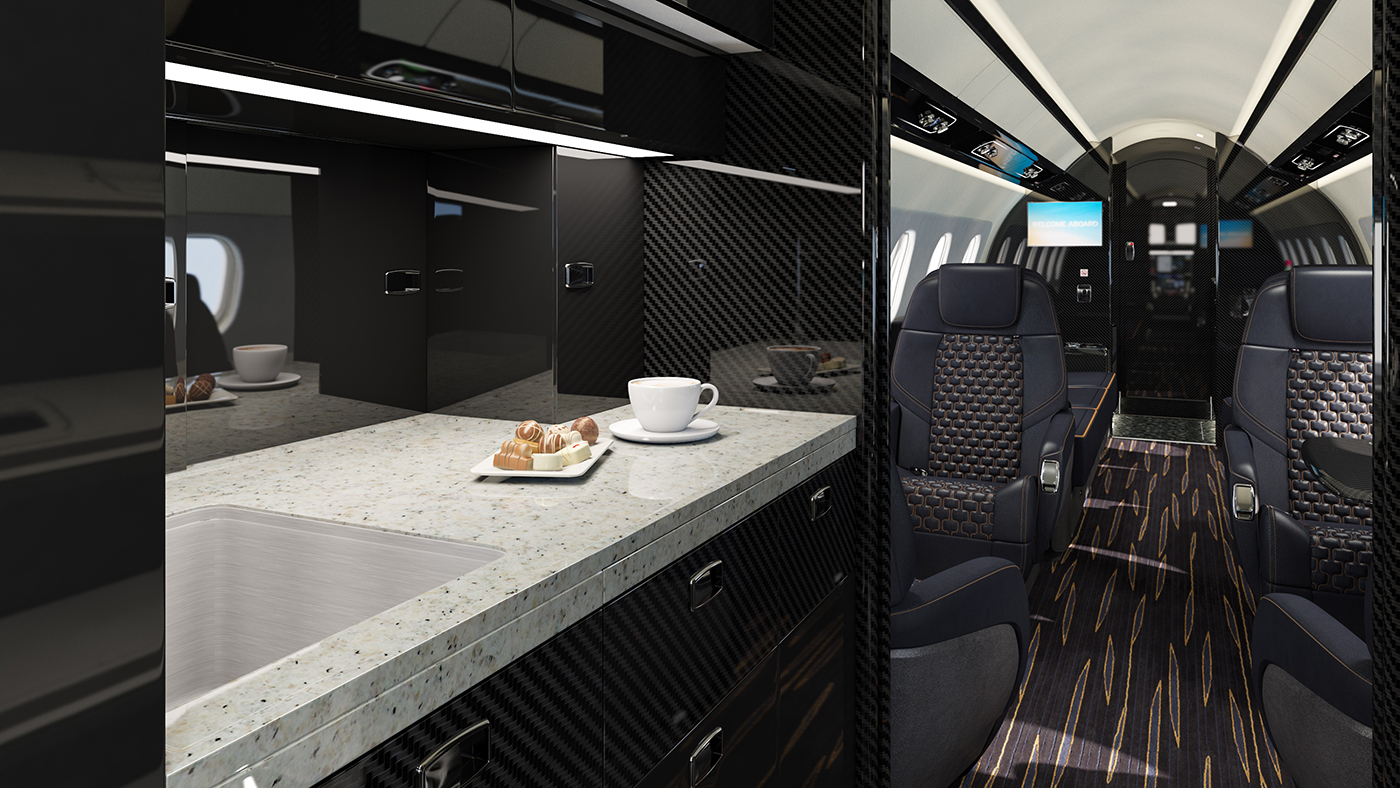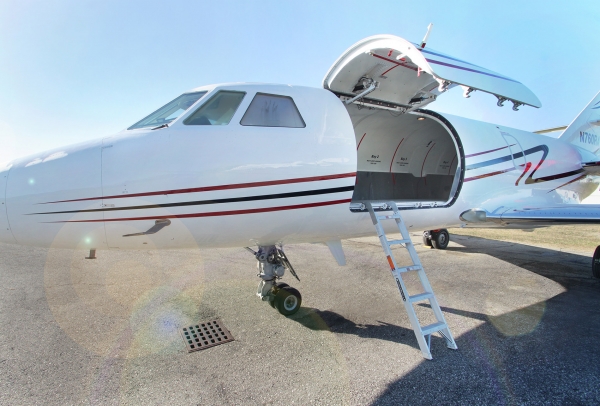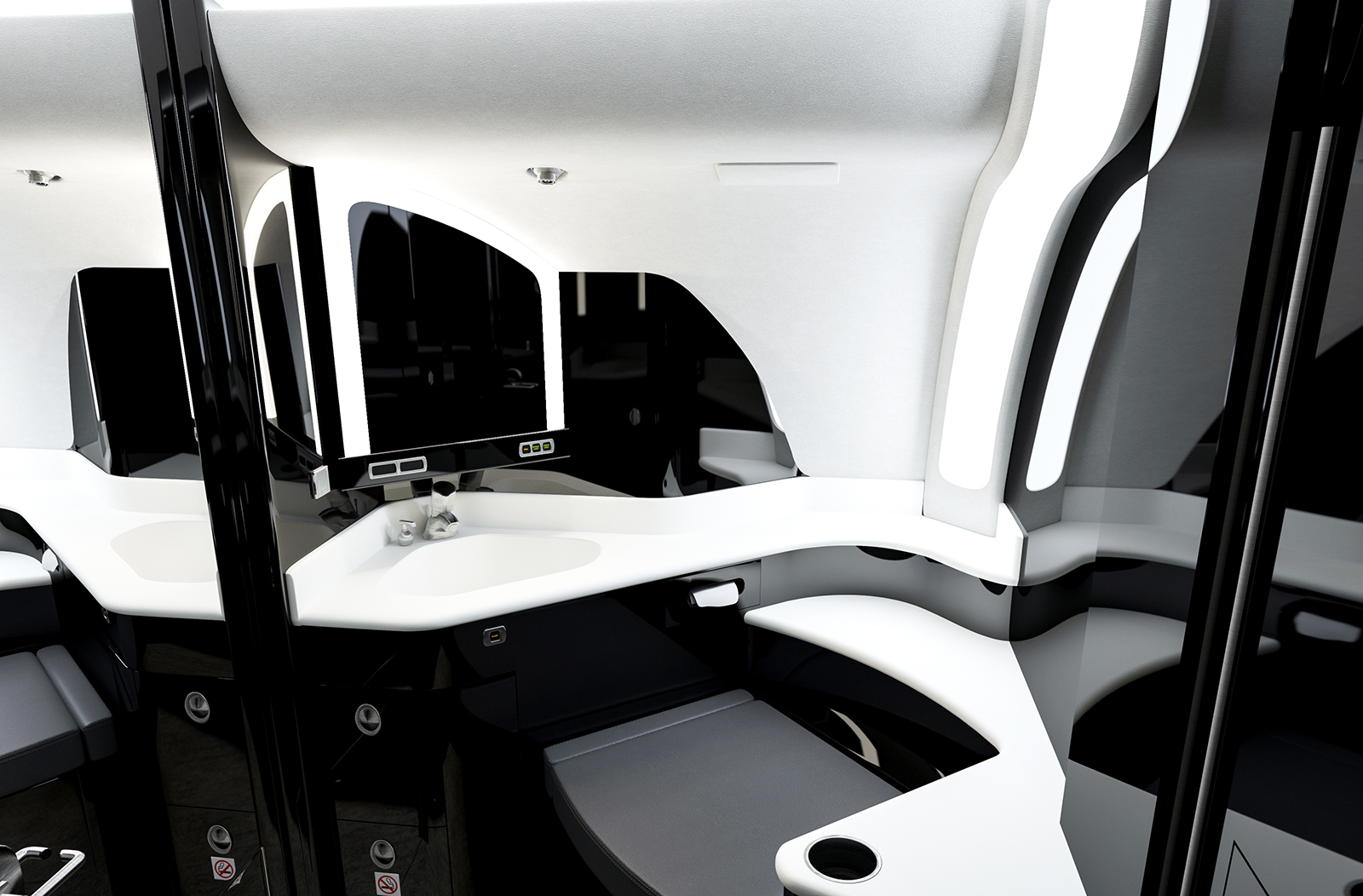[ad_1]
1. Declining Figures:
Long Island MacArthur Airport, owned by the Town of Islip, has, since its inception, been caught in a vicious cycle. Airlines have long been reluctant to provide service because of a lack of passengers, while passengers have been reluctant to use the airport because airlines failed to provide the service they sought. During the last half decade, this phenomenon has virtually choked it into nonexistence.
Although 1.8 million passengers in its eastern Nassau and Suffolk County catchment area make an average of 3.7 annual trips, these favorable facts end here, since only 25 percent of them use MacArthur for their travel. Increasing to 50 percent if only nonstop service is considered, this statistic emphasizes the benefit to carriers if they would provide it.
Indeed, during the five-year period from 2007 to 2012, the number of annual departures declined from 14,784 to 7,930, the steepest reduction of all US mid-sized airfields, virtually reducing the Long Island facility to its 1999 status, the year Southwest Airlines sparked the latest growth cycle.
Aside from being victim to the recession and escalating fuel costs like these other terminals, it has been historically forced to operate in the shadow of the three major New York airports, thus drawing upon much of the same market base, yet it relies almost exclusively on a single carrier, Southwest, for its service. The increasing trend toward airline consolidation furthermore results in fewer potential air service providers, almost all of which have operated from the airport some time in the past, while current fuel prices have rendered their code share regional jet operations unprofitable, prompting the withdrawal of the carriers that had once provided vital hub feed, such as Atlantic Southeast (ASA) to Atlanta, Comair to Cincinnati, and Continental Express to Cleveland.
Electing to deviate from the philosophy of operating from underserved, overpriced, secondary airports upon which it had been founded, and responding to passenger demand for major market presence, Southwest has progressively rebalanced aircraft assets from smaller to larger cities to maximize revenues, but has dismantled much of the Islip market it itself created cultivated in the process.
Countering this assessment, Southwest indicated that this strategy reflected systemwide industry changes and not those restricted to MacArthur.
The Long Island market involves factors beyond systemwide industry trends, however. Spurred by the additional slots it obtained at La Guardia Airport after its AirTran acquisition, Southwest itself increased frequencies and destinations from the higher-yield and -load factor airport.
Having operated a peak of 34 daily departures from Long Island, it gradually reduced its presence, discontinuing service to two of its focus cities-namely, Nashville and Las Vegas–thus removing the flight connections they represented.
By the time its Chicago-Midway service had been discontinued and shifted to La Guardiia in June of 2012, its number of flights had been almost halved, to 18.
While it had been credited with resurrecting the airport, it had, in many ways, now become the obstacle to its growth. Because of its dominance and low fare structure, it served as a deterrent to other airlines contemplating service there, particularly on routes, such as those to Florida, on which it holds a monopoly. Yet, like walking a tightrope, Town of Islip officials have consistently made considerable efforts to maintain a close relationship with the airline, since the airport’s future hinges upon it.
However, that future depends upon more than flight and passenger figures. It also depends upon financial ones-and these have been anything but optimistic. During the three-year period from 2010 to 2012, for example, the airport has lost almost $4.2 million, forcing it to use funds collected from its $11 million sale of a land parcel to the Long Island Rail Road in 2009 to compensate for the deficit, as well as attract businesses to lease in-terminal storefronts; impose, for the first time, a general aviation landing fee; and reduce staff counts and overtime hours.
But what is needed are far more reaching strategies to turn the tide. Based upon prevailing conditions, are there any?
2. Infrastructure Improvements and Proposals:
As the economic engine of the region, Long Island MacArthur Airport can only be kept running if the Town of Islip seeks innovative ways to attract the airline service that fuels it and it has therefore implemented a series of infrastructure improvements to do so.
On the landside, a $10.6 million terminal roadway realignment, whose construction commenced in September of 2011, was undertaken to redirect and streamline vehicular traffic, and included the introduction of a building-fronted island and 750-foot canopy, to facilitate passenger drop-offs and pickups from both private and public transportation. The project also included lighting, drainage, and a vehicle security checkpoint.
Funded by passenger user fees collected through ticket sales, it was completed two years later, on January 10, and $300,000 under budget.
Another landside project occurred on the airport’s west side, along Smithtown Avenue. Entailing the demolition of 52,000 square feet of antiquated and unsightly wood, steel, and concrete block structures, it was intended to attract businesses and operators deterred by the existing blight.
Of its three fixed base operators, Sheltair agreed to invest $20 million over a seven-year period in exchange for a 40-year lease on 25 of its 36 acres, paving the way for construction of 29,000 square feet of office and 161,000 square feet of hangar space.
ExcelAire also signed a 40-year lease, similarly committing $4.5 million to upgrade its facilities. Recently acquired by Charleston, South Carolina-based Hawthorne Global Aviation, the corporate jet service company demolished an adjacent building and planned to add 32,000 square feet of office and hangar space in order to be able to accommodate the new generation of ultra-large business jets, such as the Bombardier Global Express, the Gulfstream 650, and the Falcon 7X.
Within the airport, Mid-Island Air Service followed suit with its own lease and refurbishment agreement.
Mirroring the landside roadway realignment was an airside taxiway reconfiguration. A $4.5 million grant awarded to the airport, of which 95 percent came from the FAA and the other five percent from the state’s and the town’s Department of Transportation, facilitated the streamlining of aircraft taxiing toward Runway 33L, reducing turns, times, and fuel consumption. The project entailed the extension of Taxiway B, the realignment of Taxiway E, and the installation of airfield signs, lights, and pavement markings.
Bids were awarded to Rosemar Contracting of Patchogue (taxiway construction), JKL Engineering of Maryland (taxiway design), and Savik and Murray of Ronkonkoma (runway obstruction removal and equipment supply).
Other projects, the result of the airport’s short-, medium-, and long-term master plans, included a light rail people-mover to connect the terminal with the Long Island Rail Road station and the extension, to 7,000 feet, of a second runway in order to increase the safety of existing operations and to attract new, longer-range ones.
Even transforming the airport into an international gateway was proposed. Initiating a public campaign toward this end, Senator Charles Schumer, long-time MacArthur advocate, held a press conference on June 10, 2013 to urge US Customs and Border Patrol to establish a single-gate facility so that carriers could begin flights to the Bahamas and Aruba, often-demanded sun-and-sand travel destinations.
The campaign, spurred by letters of interest sent by Interjet, a low-fare Mexican carrier, and FlyA, a similarly priced, but only proposed, long-range European operator, could greatly expand the airport’s realm of operation.
Although a Department of Homeland Security bureau regularly reviewed the need for such requests, its own resources were already stretched thin and it was unlikely that it would commit to potential, not actually-needed, facilities, the adequately-equipped New York airports themselves immediately able to accommodate such flights without infrastructure changes.
These ambitious proposals created their own Catch-22 situation, much like the airport’s vicious airline-passenger cycle. While they may have succeeded in attracting new carriers and routes, it was virtually impossible to justify their costs when declining traffic barely required the existing ones.
3. Airlines:
Although these infrastructure upgrades and promising proposals may have improved current carriers’ operational experiences, it was, in the end, the Town of Islip’s ability to attract the airlines that would pump the lifeblood into the Long Island regional airport. It therefore made several significant efforts to do so.
A. Existing Airlines:
Having repositioned its aircraft to La Guardia Airport, Southwest, whose latest presence was only a shadow of its peak one, was unlikely to increase frequencies or inaugurate service to new destinations under prevailing economic conditions.
Nevertheless, it emphasized its continued dedication to the regional airfield. Although a provision in its 25-year contract could theoretically have enabled it to discontinue all service after a decade, it had had no plans to do so.
Despite the considerable retrenchment to the contrary, the 68-percent load factors it had experienced two years ago had been intermittently increased to a present 92 as a result of its service reduction strategy. And, despite the fact that its simultaneous La Guardia and MacArthur presences seemed to dilute the same market, their respective business and leisure orientations dispelled this perception.
Nevertheless, the Town of Islip was successful in negotiating new service-with another existing carrier, US Airways.
As MacArthur’s original tenant-and hence its longest serving one-then-Allegheny, which was subsequently rebranded USAir-re-established nonstop service to Washington Reagan National after the 2001 terrorist attack-imposed flight restrictions forced the cancellation of its original one. The route itself, its second after that to Philadelphia, was facilitated by a slot swap with Delta at La Guardia.
Commemorating the first of two daily, 50-passenger CRJ-200 regional jets operated by Air Wisconsin on March 25, 2012, airport fire trucks christened it with a water curtain after its 12:50 p.m. landing.
According to Newsday, Islip Town Supervisor Tom Croci said, ‘”I look forward to working with our senators and congressmen to ensure the jewel of our town, Long Island MacArthur Airport, gets the resources and attention it requires to live up to its full potential.'”
Providing the vital, downtown link to the nation’s capital, and eliminating the need for the hour train ride from Southwest’s comparable Baltimore service, the aircraft redeparted at 1:28 p.m.
Senator Charles Schumer commented that the new connection only confirmed that Long Island was an untapped market. Although US Airways only carried between six and seven percent of its traffic, it was considered disproportionately important because of the business- and hub-oriented nature of its routes.
B. New Airlines:
Enticing existing carriers to inaugurate service constituted only one side of the town’s strategy coin. Attracting new ones was the other, and, toward this end, the Long Island Association, the largest business and civic organization, expressed interest in potential service by sending a letter to three carriers: the aforementioned US Airways, as well as to JetBlue and Air Canada.
Although the Southwest effect of stimulating demand and expansions at airports it served initially left its imprint on MacArthur for most of the past decade, its retrenchment reversed this trend, and JetBlue, a similar, originally single-aircraft type, low-fare, minimal frills carrier was envisioned as having the same positive influence.
Having already blanketed the New York area with presences at the three major New York airports and its two secondary ones, White Plains’ Westchester County and Newburgh’s Stewart International airports, Islip was one of three new destinations it had recently contemplated serving.
Schumer, instrumental in its original, late-1990s New York service by providing it with 75 slots in exchange for realistically-priced upstate routes, considered the Long Island airfield “the missing piece of the jigsaw” for JetBlue. He, along with previous Islip Town Supervisor, Phil Nolan, emphasized their support in working with the carrier and both state and local authorities to consummate a deal.
Escorted by Schumer himself, JetBlue CEO, Dave Barger, was given a three-hour tour of the airport, an integral part of the carrier’s evaluation process. Walking past some 30 departing passengers, Schumer introduced him and advised them that he was trying to persuade him to inaugurate service, prompting spontaneous applause.
Because of the combined, 2.9 million residents of Nassau and Suffolk counties, Barger considered the region “a decent-sized city,” and because the Caribbean constituted the airline’s targeted growth area, he found the airport’s Caribbean and Latin demographics favorable.
While JetBlue mirrored its Southwest competitor in many ways, those ways, at least relative to the Long Island facility, became the spitting image. Winning an auction for eight slots at La Guardia Airport, it committed aircraft capacity to its New York counterpart instead.
Despite the seemingly disappointing outcome, Barger emphasized that, given the optimum conditions, that service to Islip was not a matter of “if, but when.”
Another airline the town approached, which itself had already expressed interest in Islip service, was Air Canada.
Market studies had indicated that 58 percent of the passengers in the airport’s catchment area had reason to fly to Canada, while more than 30 industrial parks occupying 4,200 acres within the Town of Islip’s control further strengthened the need for such a route. In 2011, New York State’s two-way trade with the country amounted to $34.8 billion.
A Toronto link, specifically, was considered a win-win strategy. As the airline’s 60th transborder connection, it would afford it with an uncongested airport and airspace operation, minimizing fuel costs and delays, while passengers would have access to its principle hub, facilitating Canadian, European, and Asian flight connections. Since pre-clearance immigration and customs facilities were already existent in Canada, no changes were necessary at MacArthur.
But, once again, La Guardia’s dominance only reduced it to a footnote. Because WestJet, its strongest competitor, had just been awarded eight slots at the New York airport, it was more prudent to concentrate its assets there in an attempt to retain its market share than shift them to Long Island.
Alaska-based PenAir, the penultimate carrier with which the town explored new service, bore more fruit.
Achieved with the FAA’s Air Carrier Incentive Plan, which entailed reduced fees for either new entrants or existing ones establishing new routes, the agreement saved it $120,000 in office, rent, operational, and landing costs-or a two-year equivalent-provided it continued the service for two years after that.
Replacing the mulitple-daily Business Express and subsequent American Eagle Saab 340 service to Boston-Logan, but discontinued in 2008, PenAir inaugurated two daily round-trips with the same turboprop equipment on July 25, 2013 in a move it considered a logical extension of its growing northeast route system, which encompassed Bar Harbor, Plattsburgh, and Presque Isle.
Flights departed at 8:40 a.m. and 7:10 p.m. with originations in Boston at 7:00 a.m. and 5:30 p.m. One-way introductory fares were set at $119.
The final carrier contacted, Allegiant Air, equally brought its wings to Long Island.
“Las Vegas-based Allegiant Travel Company,” according to its press release, “is focused on linking travelers in small cities to world-class leisure destinations. The company operates a low-fare, high-efficiency, all-jet passenger airline through its subsidiary, Allegiant Air, while also offering other travel-related products, such as hotel rooms, rental cars, and attraction tickets.”
After market studies indicated the need for air service to Florida’s west coast, the Town of Islip wooed the carrier, which itself found the demographics favorable, announcing its intention on August 20, 2013. It would be its 99th US city that served one of 14 vacation destinations.
“We are pleased to add the beaches of southwest Florida as an affordable, convenient destination option for Long Island residents,” according to the press release. “We are confident the community will appreciate the convenience of flying nonstop to Punta Gorda.”
Offering $69 one-way and $99 round-trip introductory fares, Allegiant inaugurated Punta Gorda/Ft. Myers service four months later, on December 20, with a 166-passenger MD-80 operating as Flight 999 and departing at 7:20 p.m., a date considered the threshold to the traditional holiday and winter Florida season.
Based upon response, additional seasonal and year-round service to Myrtle Beach, St. Petersburg, Orlando, Ft. Lauderdale, and Las Vegas would be considered.
4. Current Service:
Before Long Island MacArthur Airport can make an economic impact on the region, it needs sufficient air service to do so. Yet, with 23 departures offered by January of 2014, two of which were not even daily, that goal has hardly been realized.
Southwest, still the dominant airline, offered five flights to Baltimore, three to Orlando, two to Ft. Lauderdale, two to West Palm Beach, and one to Tampa-or a total of 13-operated by 737-700 aircraft. This was only one more than it had offered in 1999, when it had sparked the airport’s latest growth period, having returned it to its origins.
US Airways, a stronghold since the Allegheny service days, offered four daily de Havilland DHC-8 turboprop flights through its Piedmont regional carrier to Philadelphia and two to Washington with Bombardier CRJ-200 regional jet equipment with Air Wisconsin.
PenAir linked Boston with two Saab 340 departures and Allegiant Air connected the Long Island field with two weekly MD-80 services to Ft. Myers/Punta Gorda.
Restoration of its important business connections to Boston and Washington, each with two flights accommodating 50 or fewer passengers, enabled travelers to avoid La Guardia-associated congestion and commute times, and constituted a step in the right direction. But it was only a baby one. If Long Island MacArthur is to once again mature into a regional provider, reaping its own economic sustainability through landing, operational, office, concession, and parking fees, it needs a much greater injection of air service.
[ad_2]
Source by Robert Waldvogel









